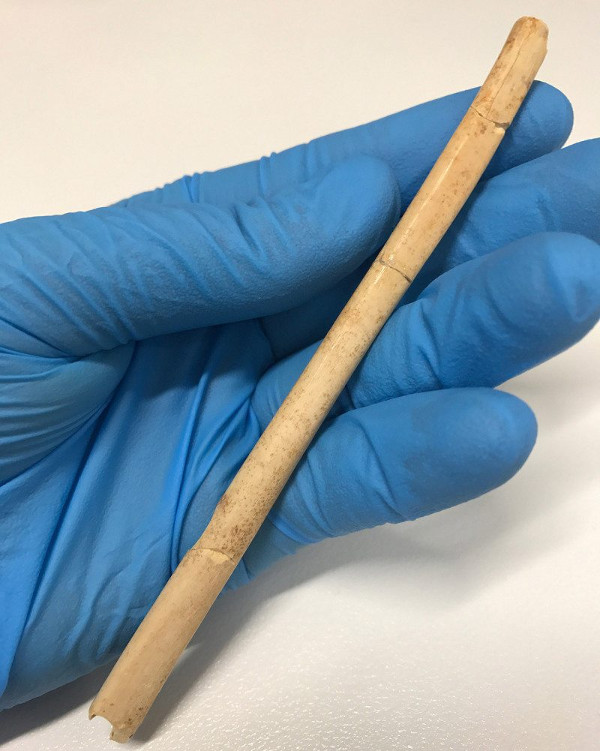Nasal piercings 44,000 years of ancient Aboriginal Australia
Handmade 13cm long bone fragment, originating about 44,000 years ago found in Australia has many characteristics like modern nose piercings.
Sue O'Connor, from the Australian National University, found a sophisticated artifact , 13cm long and originated around 44,000 BC in a cave in the Kimberley, Western Australia, and New Scientist regions on 18 / 11 reports. Its shape is like a piercings piercing the nasal septum, so this may be the world's oldest man-made bone jewelry .
O'Connor's colleague Michelle Langley used a microscope to analyze artifacts. The results showed that the red marks and scratches on the side of the object were created by stone tools.

Handmade bone fragments are found in Australia.(Photo: Michelle Langley).
After comparing it with sewing needles and jewelry made from indigenous nineteenth and twentieth centuries, the team believes that the bone is more like a jewelry than a tool. Cracks in artifacts are consistent with the assumption that a strong push and twist action has caused the tip to break, possibly when it is pierced through the human nasal septum. The shape and staining of ocher and this style is very similar to modern bone nose piercings.
Techniques for making crafts from original bones developed in Africa. The first people to Australia may have brought this technique and changed it to fit the animal bones here. Kangaroo bones are very hard, strong and easy to penetrate, so they are used instead of horns and ivory.
"This finding is important because it gives us information about the first residents in Australia," Langley said.
In the past, very rare ancient bone tools and jewelry were found in Australia, leading to the hypothesis that indigenous peoples initially forgot the skills they brought from Africa.
"Handmade bone fragments, whether used as nose piercings or sewing needles, all prove that the first residents of Australia were also able to perform complicated actions like others", Ian Lilley, University Queensland, comment.
- Mysterious aboriginal figure in Australia
- When did the first Aboriginal people arrive in Australia?
- The oldest rock art in Australia
- Aboriginal Australians represent the oldest civilization on Earth
- Mysterious Aboriginal drawing 4.2km long in the Australian desert
- New discovery about the first 'migrants' to Australia
- 'Paradise Island' in Australia
- New research changes understanding of the migration of ancient people
- Having a stuffy nose when you get the flu, is it better to go outside or swallow the stomach?
- The strange relationship between the Amazon and Australian aboriginal genes
- Look at the epidemic of guessing disease
- Discover rare 2,000-year-old pearls in Australia
 Discovered an ancient centipede fossil 99 million years old
Discovered an ancient centipede fossil 99 million years old Discovered bat-like dinosaurs in China
Discovered bat-like dinosaurs in China Discovered a 200-year-old bronze cannon of the coast
Discovered a 200-year-old bronze cannon of the coast Discover 305 million-year-old spider fossils
Discover 305 million-year-old spider fossils